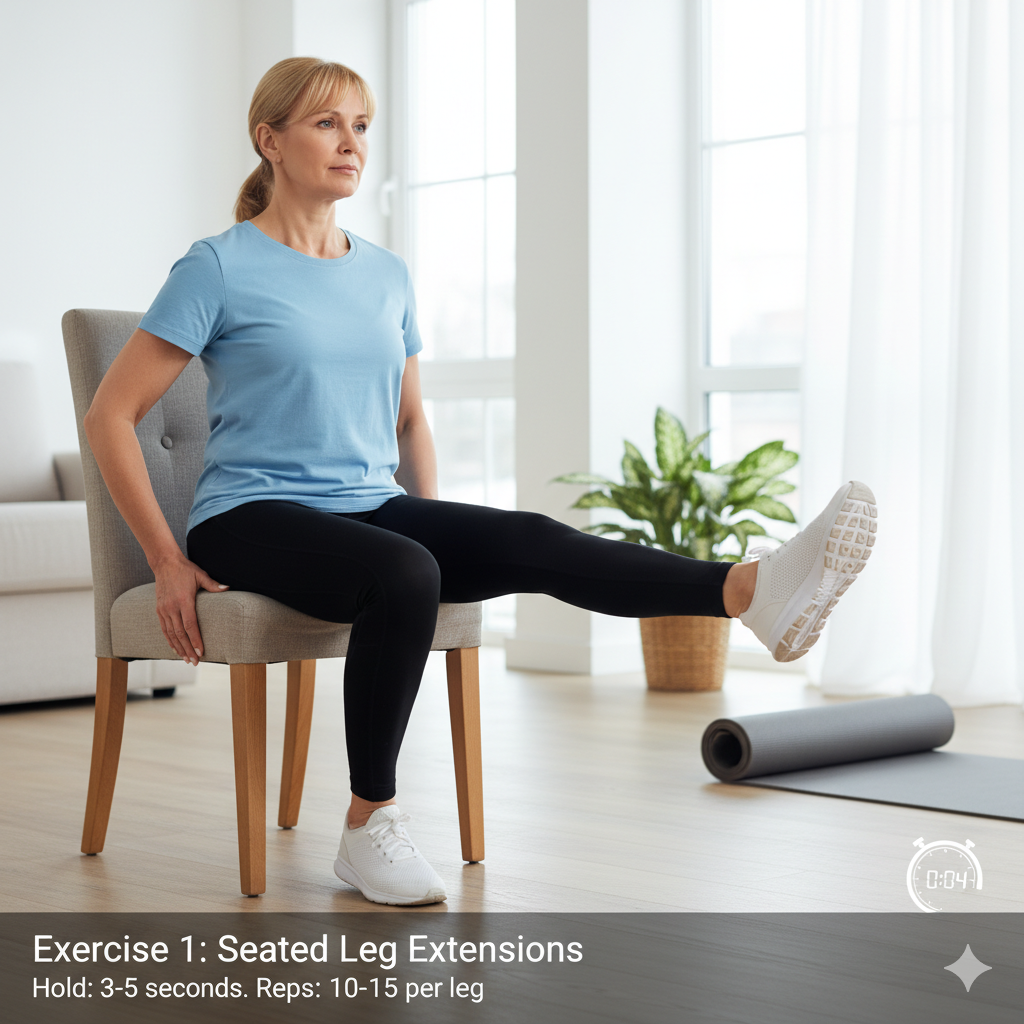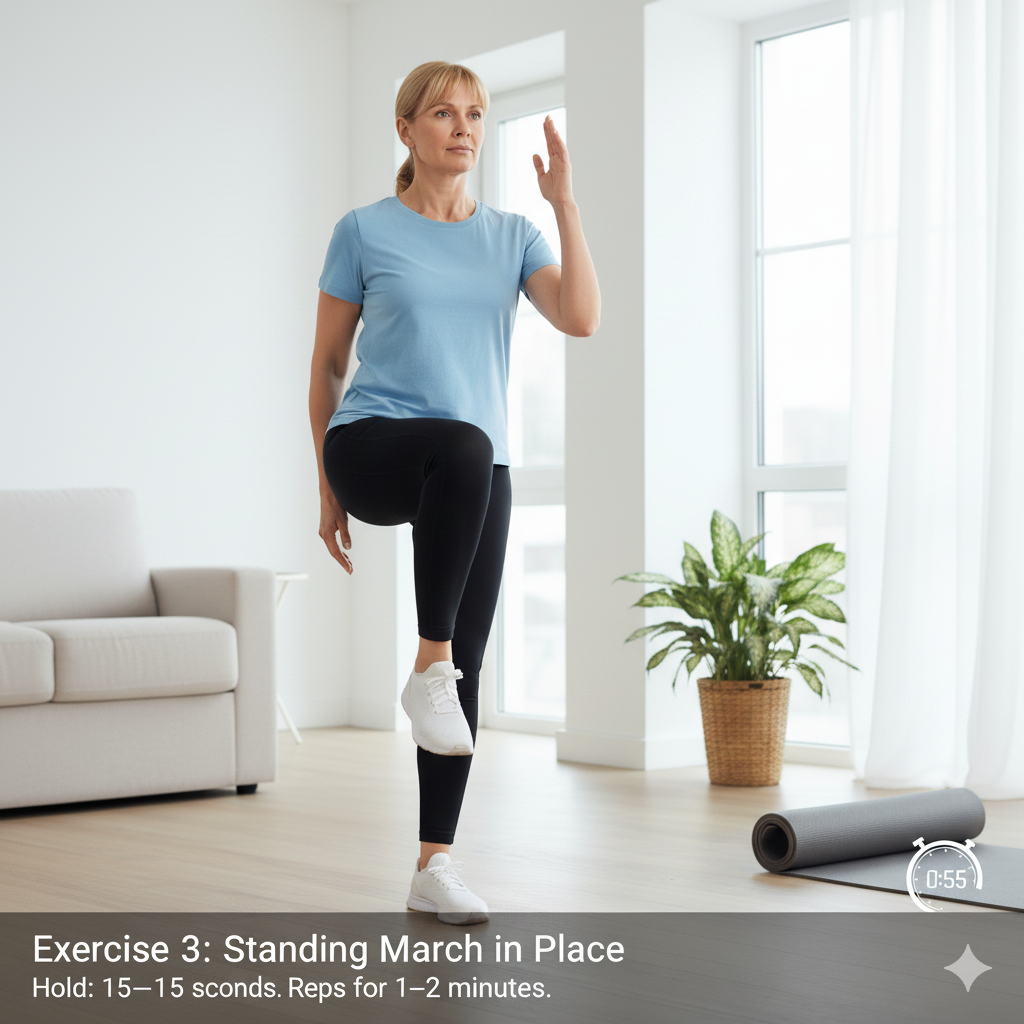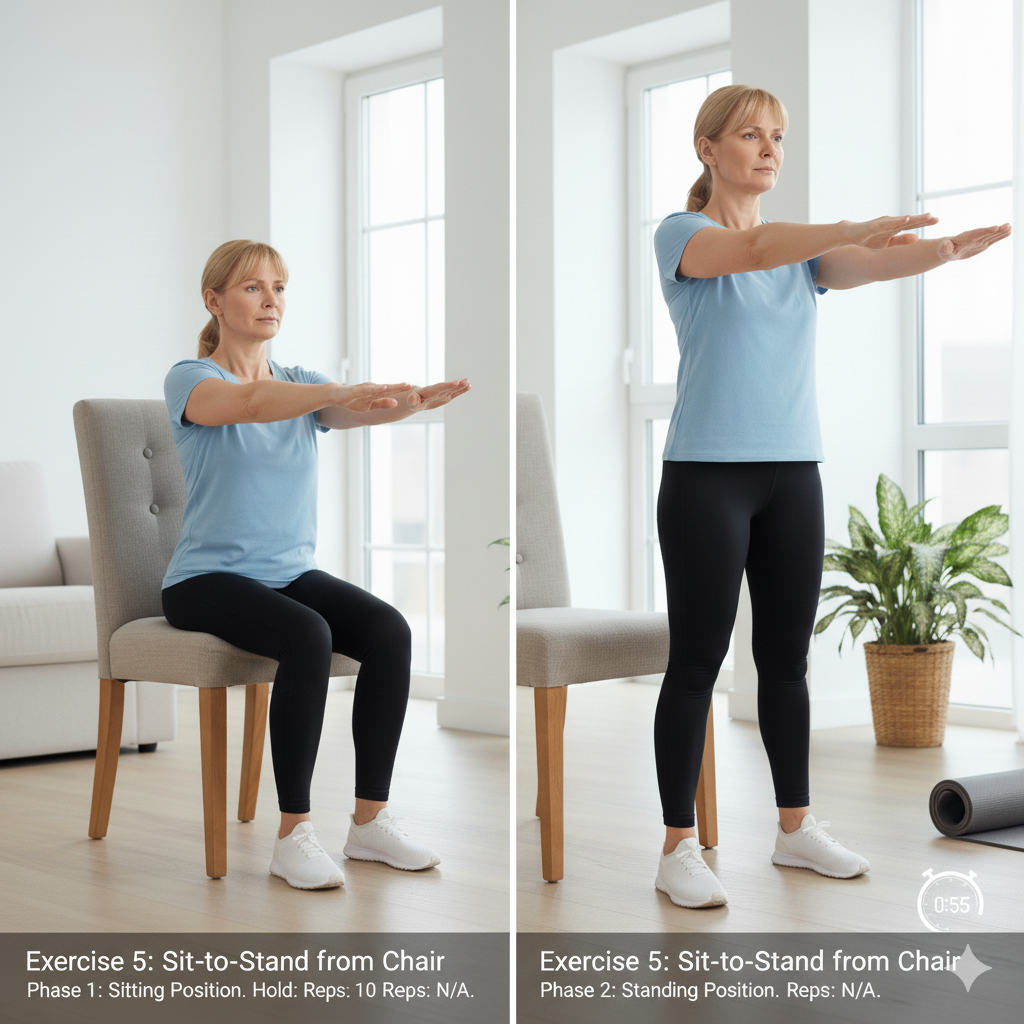Top 5 Exercises to Improve Mobility & Prevent Falls in Seniors
As we grow older, staying active becomes more than just a fitness goal—it’s essential for staying independent, safe, and confident. Good mobility and balance help seniors move more freely, avoid injuries, and enjoy a better quality of life.
Falls are one of the leading causes of injury among older adults. In fact, one in three seniors experiences a fall each year, often leading to serious complications. But the good news is, many of these incidents can be prevented with regular movement and targeted exercises.
This blog shares easy, effective mobility exercises for seniors that focus on improving strength, flexibility, and balance. These are all low-impact exercises for seniors, designed to support safe movement and help prevent falls. Whether you're just starting out or looking to stay steady on your feet, these fall prevention exercises for seniors can make a real difference.
Why Mobility Matters for Seniors?
Mobility helps older adults stay independent and active in daily life. Tasks like standing up, walking, or reaching shelves become easier with good balance and strength.
As we age, it’s normal to lose some flexibility and stability. But regular movement can help slow this down. Gentle, consistent activity builds strength and reduces the risk of falling.
Using the best mobility exercises for seniors can improve movement and confidence. These safe, simple exercises to prevent falls in the elderly are key to staying strong, steady, and self-reliant.
Exercises for Seniors
Exercise 1: Seated Leg Extensions
How to Do It
Start by sitting upright in a sturdy chair with your feet flat on the floor and your knees bent at 90 degrees. Hold onto the sides of the chair for support. Slowly lift one leg, straightening it out in front of you as much as you can without locking the knee. Hold the position for 3–5 seconds, then slowly lower your foot back to the floor. Repeat this movement 10–15 times, then switch to the other leg.
This is a safe and effective chair exercise for seniors that doesn’t require any equipment and can be done at home.
Why It Helps
Seated leg extensions target the quadriceps—the muscles at the front of your thighs. These are essential for supporting your knees and helping with everyday tasks like walking, climbing stairs, or getting up from a seated position. As a key leg strengthening exercise for seniors, it helps maintain lower body strength, reduces joint pressure, and improves stability.
Regular practice of this exercise can also help prevent muscle loss, improve circulation, and reduce the risk of falls, making it a great addition to any senior mobility routine.
Exercise 2: Heel-to-Toe Walk
How to Do It
Stand tall with your feet together and take a deep breath. Slowly step forward with one foot, placing the heel of your front foot directly in front of the toes of the back foot. Imagine you’re walking on a straight line. Continue to walk in a straight line, placing one foot in front of the other, heel to toe. For extra stability, you can use a wall or chair to hold onto as you practice.
Aim for 10–15 steps in a row, focusing on slow, controlled movements.
Why It Helps
The heel-to-toe walk is one of the most effective balance exercises for seniors. It helps improve walking control, posture, and coordination. By practising this exercise, seniors can strengthen the muscles that support balance and mobility, helping to reduce the risk of falls.
This exercise for balance for seniors also promotes better posture by encouraging a straight spine and activating core muscles. As you improve your balance, you'll gain more confidence in your movements, both at home and outside.
Exercise 3: Standing March in Place
How to Do It
Stand tall with your feet hip-width apart and your arms relaxed by your sides. Lift one knee up towards your chest as high as you comfortably can, then lower it back down. Repeat with the other leg. If you need extra stability, you can hold onto a sturdy chair or countertop for support. Continue alternating legs in a marching motion for 1–2 minutes, gradually increasing the time as you build strength.
Why It Helps
This balancing exercise for seniors targets the core and leg muscles, promoting better posture and control. As you lift each leg, your body works to stay balanced, which helps strengthen stabilising muscles. This exercise also engages your hip flexors, which are important for mobility and preventing falls.
Incorporating this into your daily routine can improve your overall mobility exercises for seniors, allowing for more confident movement and better leg control.
Exercise 4: Gentle Stretching Routine
How to Do It
Start by sitting or standing comfortably. Perform gentle stretches, focusing on the neck, shoulders, arms, and legs. Hold each stretch for 15–30 seconds, ensuring no twisting or straining. You can try reaching your arms overhead, stretching your legs forward, or gently pulling your arm across your body.
Why It Helps
Stretching exercises for seniors improve flexibility and joint comfort, which is key to maintaining mobility. This full-body stretch routine, avoiding obliques for seniors, helps increase range of motion, reduce muscle stiffness, and improve circulation, keeping your body flexible and more resilient against falls.
Exercise 5: Sit-to-Stand from Chair
How to Do It
Sit in a sturdy chair with your feet flat on the floor and your knees bent at 90 degrees. Slowly lean forward slightly, engage your core, and push through your heels to stand up. Then, slowly lower yourself back down into the chair. Repeat this 10–15 times, ensuring you move with control.
Why It Helps
This simple movement is an excellent fall prevention exercise for seniors. It targets the legs and core, improving strength, balance, and stability. As one of the best mobility exercises for seniors, it helps with daily activities, like getting in and out of chairs, while reducing the risk of falls.
Tips for Safe Exercise at Home
● Start Slow: Begin with low-impact exercises for seniors to build strength gradually.
● Use Support: Hold onto a sturdy chair or countertop for stability during balance exercises.
● Listen to Your Body: Stop if you feel any discomfort or pain, and don’t push through it.
● Stay Hydrated: Drink water throughout your session to stay hydrated.
● Focus on Consistency: Aim for regular practice rather than high-intensity exercises.
● Chair Exercises: Incorporate chair exercises for seniors for added support and safety while building strength.
When to Seek Professional Guidance
● Know When to Ask for Help: If you experience pain or struggle with exercises, it’s time to seek professional advice.
● Tailored Routines: Health professionals can design a mobility workout for seniors specific to their needs and capabilities.
● Expert Support: Professional guidance ensures you're doing the right exercises to prevent falls in the elderly and avoid injury.
Conclusion
Incorporating these exercises into your daily routine can significantly improve your balance, reduce the risk of falls, and enhance your overall mobility. Consistency is key, so start with small, manageable steps and gradually increase as you feel more confident. Remember, the more you practice, the better your mobility and strength will become. Take control of your movement and start with these simple, safe exercises today.
“Take Control of Your Mobility Today! Don’t wait for a fall to happen—start these simple exercises and stay strong, balanced, and independent. Book a personalized consultation with Movement Therapy and get a tailored exercise plan designed just for you.”
FAQs
-
The best exercises focus on balance, strength, and flexibility. Key routines include heel-to-toe walking, sit-to-stand exercises, marching in place, side leg raises, and toe raises. Performing these regularly can improve stability and reduce the risk of falls.
-
Seniors should aim for daily or at least 3–5 times per week, starting with shorter sessions and gradually increasing intensity. Consistency is more important than duration, and exercises should be done safely with support if needed.
-
Most exercises are safe when performed carefully, but seniors with chronic conditions, recent surgeries, or severe mobility limitations should consult a healthcare professional or physiotherapist before starting any new routine.







